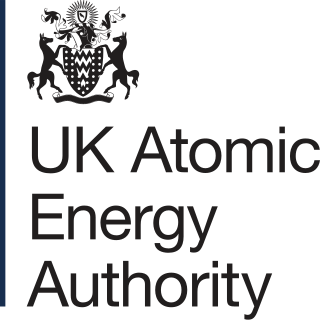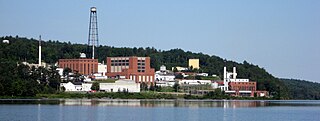Related Research Articles

Argonne National Laboratory is a science and engineering research national laboratory operated by UChicago Argonne LLC for the United States Department of Energy. The facility is located in Lemont, Illinois, outside of Chicago, and is the largest national laboratory by size and scope in the Midwest.

The University of Saskatchewan is a Canadian public research university, founded on March 19, 1907, and located on the east side of the South Saskatchewan River in Saskatoon, Saskatchewan, Canada. An "Act to establish and incorporate a University for the Province of Saskatchewan" was passed by the provincial legislature in 1907. It established the provincial university on March 19, 1907 "for the purpose of providing facilities for higher education in all its branches and enabling all persons without regard to race, creed or religion to take the fullest advantage". The University of Saskatchewan is the largest education institution in the Canadian province of Saskatchewan. The University of Saskatchewan is one of Canada's top research universities and is a member of the U15 Group of Canadian Research Universities.

The National Superconducting Cyclotron Laboratory (NSCL), located on the campus of Michigan State University was a rare isotope research facility in the United States. Established in 1963, the cyclotron laboratory has been succeeded by the Facility for Rare Isotope Beams, a linear accelerator providing beam to the same detector halls.

McMaster University is a public research university in Hamilton, Ontario, Canada. The main McMaster campus is on 121 hectares of land near the residential neighbourhoods of Ainslie Wood and Westdale, adjacent to the Royal Botanical Gardens. It operates six academic faculties: the DeGroote School of Business, Engineering, Health Sciences, Humanities, Social Science, and Science. It is a member of the U15, a group of research-intensive universities in Canada.

The United Kingdom Atomic Energy Authority is a UK government research organisation responsible for the development of fusion energy. It is an executive non-departmental public body of the Department for Business, Energy and Industrial Strategy (BEIS).

Chalk River Laboratories is a Canadian nuclear research facility in Deep River, about 180 km (110 mi) north-west of Ottawa.

TRIUMF is Canada's national particle accelerator centre. It is considered Canada's premier physics laboratory, and consistently regarded as one of the world's leading subatomic physics research centers. Owned and operated by a consortium of universities, it is on the south campus of one of its founding members, the University of British Columbia in Vancouver, British Columbia. It houses the world's largest cyclotron, a source of 520 MeV protons, which was named an IEEE Milestone in 2010. Its accelerator-focused activities involve particle physics, nuclear physics, nuclear medicine, materials science, and detector and accelerator development.

The Paul Scherrer Institute (PSI) is a multi-disciplinary research institute for natural and engineering sciences in Switzerland. It is located in the Canton of Aargau in the municipalities Villigen and Würenlingen on either side of the River Aare, and covers an area over 35 hectares in size. Like ETH Zurich and EPFL, PSI belongs to the Swiss Federal Institutes of Technology Domain of the Swiss Confederation. The PSI employs around 2,100 people. It conducts basic and applied research in the fields of matter and materials, human health, and energy and the environment. About 37% of PSI’s research activities focus on material sciences, 24% on life sciences, 19% on general energy, 11% on nuclear energy and safety, and 9% on particle physics.

The Canadian Light Source (CLS) is Canada's national synchrotron light source facility, located on the grounds of the University of Saskatchewan in Saskatoon, Saskatchewan, Canada. The CLS has a third-generation 2.9 GeV storage ring, and the building occupies a footprint the size of a Canadian football field. It opened in 2004 after a 30-year campaign by the Canadian scientific community to establish a synchrotron radiation facility in Canada. It has expanded both its complement of beamlines and its building in two phases since opening. As a national synchrotron facility with over 1000 individual users, it hosts scientists from all regions of Canada and around 20 other countries. Research at the CLS has ranged from viruses to superconductors to dinosaurs, and it has also been noted for its industrial science and its high school education programs.

Sylvia Olga Fedoruk [Fe-doruk],, was a Canadian physicist, medical physicist, curler and the 17th Lieutenant Governor of Saskatchewan.

The Bhabha Atomic Research Centre (BARC) is India's premier nuclear research facility, headquartered in Trombay, Mumbai,Maharashtra. Founded by Homi Jehangir Bhabha Atomic Energy Establishment, Trombay (AEET) in January 1954 as a multidisciplinary research program essential for India's nuclear program. It operates under the Department of Atomic Energy (DAE), which is directly overseen by the Prime Minister of India. In 1966 after the death of Mr. Bhabha, AEET was renamed as Bhabha Atomic Research Centre (BARC).

The Variable Energy Cyclotron Centre (VECC) is a research and development unit of the Department of Atomic Energy. The VECC is located in Kolkata, India and performs research in basic and applied nuclear sciences and development of the latest nuclear particle accelerators. It has a collaboration with the European Organization for Nuclear Research. The Centre houses a 224 cm cyclotron—the first of its kind in India—which has been operational since 16 June 1977. It provides proton, deuteron, alpha particle and heavy ion beams of various energies to other institutions.
The Australian Nuclear Science and Technology Organisation (ANSTO) is a statutory body of the Australian government, formed in 1987 to replace the Australian Atomic Energy Commission. Its head office and main facilities are in southern outskirts of Sydney at Lucas Heights, in the Sutherland Shire.

The Saskatchewan Research Council (SRC) is a provincial treasury board crown corporation engaged in research and technology development on behalf of the provincial government and private industry. It focuses on applied research and development projects that generate profit. Some of its funding comes from government grants, but it generates the balance from selling products and services. With nearly 300 employees and $137 million in annual revenues, SRC is the second largest research and technology organization in Canada.

The Department of Atomic Energy (DAE) is a department with headquarters in Mumbai, Maharashtra, India. DAE was established in 1954 by a Presidential Order. DAE has been engaged in the development of nuclear power technology, applications of radiation technologies in the fields of agriculture, medicine, industry and basic research. DAE comprises five research centres, three industrial organisations, five public sector undertakings and three service organisations. It has under its aegis two boards for promoting and funding extramural research in nuclear and allied fields, mathematics and a national institute. It also supports eight institutes of international repute engaged in research in basic sciences, astronomy, astrophysics, cancer research and education. It also has in its fold an educational society that provides educational facilities for children of DAE employees. The important programmes of the DAE are directed towards:

The Saskatchewan Accelerator Laboratory (SAL) was a linear accelerator facility on the University of Saskatchewan campus in Saskatoon, Saskatchewan, Canada. The facility was constructed in 1962 at a cost of $1.7M under the direction of Leon Katz. SAL was identified by the OECD as a National Large-Scale Facility. SAL provided support for radiology, chemistry and sub-atomic physics research.

Daresbury Laboratory is a scientific research laboratory based at Sci-Tech Daresbury campus near Daresbury in Halton, Cheshire, England. The laboratory began operations in 1962 and was officially opened on 16 June 1967 as the Daresbury Nuclear Physics Laboratory by the then Prime Minister of United Kingdom, Harold Wilson. It was the second national laboratory established by the British National Institute for Research in Nuclear Science, following the Rutherford High Energy Laboratory. It is operated by the Science and Technology Facilities Council, part of UK Research and Innovation. As of 2018, it employs around 300 staff, with Professor Susan Smith appointed as director in 2012.

The Triangle Universities Nuclear Laboratory, abbreviated as TUNL, is a tripartite research consortium operated by Duke University, the University of North Carolina at Chapel Hill, North Carolina State University and North Carolina Central University. The laboratory is located on the West Campus of Duke University in Durham, North Carolina. Researchers are now drawn from several other universities around the United States in addition to members from the founding universities. TUNL also participates in long term collaborations with universities and laboratories around the world. Funding for TUNL comes primarily from the United States Department of Energy Office of Nuclear Physics.

Cobalt therapy is the medical use of gamma rays from the radioisotope cobalt-60 to treat conditions such as cancer. Beginning in the 1950s, cobalt-60 was widely used in external beam radiotherapy (teletherapy) machines, which produced a beam of gamma rays which was directed into the patient's body to kill tumor tissue. Because these "cobalt machines" were expensive and required specialist support, they were often housed in cobalt units. Cobalt therapy was a revolutionary advance in radiotherapy in the post-World War II period but is now being replaced by other technologies such as linear accelerators.

The Helmholtz-Zentrum Dresden-Rossendorf (HZDR) is a Dresden-based research laboratory. It conducts research in three of the Helmholtz Association's areas: materials, health, and energy. HZDR is a member of the Helmholtz Association of German Research Centres.
References
- ↑ "World Nuclear News - Canadian nuclear research centre secures funding". 23 February 2012. Retrieved 2012-08-11.
- ↑ MacPherson, Colleen (2011). "Council approves nuclear innovation centre". On Campus News.
- ↑ "Sask. spending $30M on nuclear research centre - CBC News" . Retrieved 2012-08-11.
- ↑ "U of S nuclear centre to be named for Fedoruk". The Star Phoenix. 2012.
- ↑ "Fedoruk Centre About Us: Impact Areas" . Retrieved 2013-02-05.
- ↑ "Cyclotron Facility". Archived from the original on 2014-08-12. Retrieved 2014-08-11.
- ↑ "Briar Patch Magazine - Follow the yellowcake road". Feb 28, 2012. Retrieved 2012-08-11.
- ↑ "Board of Directors". www.fedorukcentre.ca. Archived from the original on 2013-02-05.